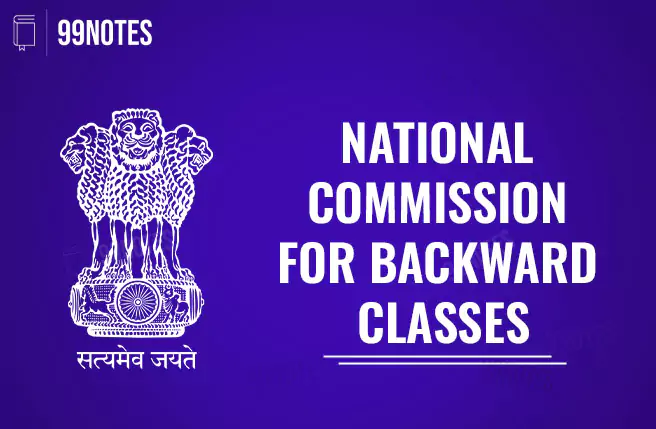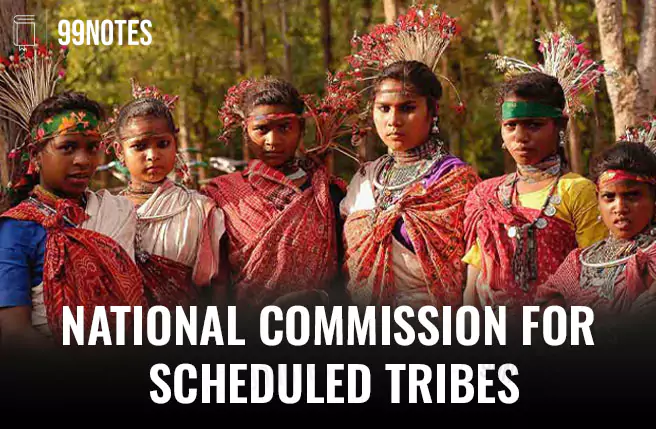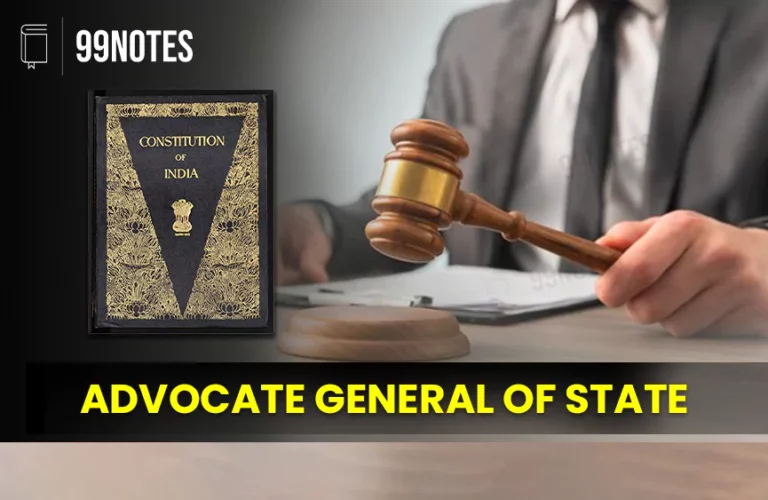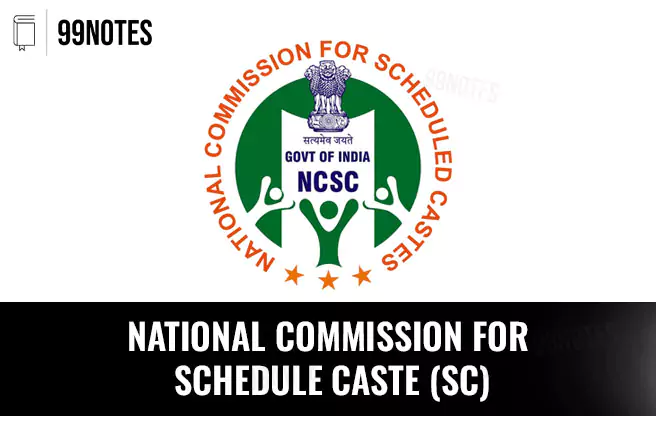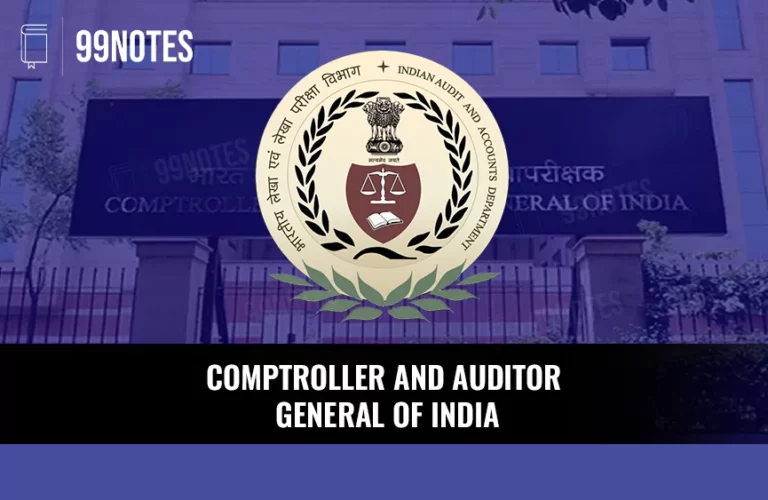National Commission for Backward Classes- UPSC Notes
National Commission for Backward Classes
The term Other backward class denotes the castes that are educationally or socially backward or disadvantaged (other than scheduled castes and scheduled tribes). The backwards classes account for around 52% of the total population as per the Mandal Commission report, 1980.
Constitution of National Commission for Backward Classes
Since Independence, several commissions have been created to suggest steps for the betterment of the backward classes. Kaka Kelkar Commission (1953) and Mandal Commission (1979) were created by executive order under the provisions of Article 340 in this regard. But these were temporary commissions and did not suit the changing social framework of India.
Statutory Status of National Commission for Backward Classes
- The main stimulus, however, was made by the Judiciary through the Mandal Case Judgement, 1992.
- In the Mandal case, also known as the Indra Sawhney VS Union of India case, the Supreme Court decreed that a central government should constitute a permanent statutory body to scrutinise the complaints regarding the social group having been wrongly included in or excluded from the list of those eligible for 27% reservation.
- Hence the National Commission for Backward Classes was set up as a statutory body in 1993 through the Commission for Backward Classes Act.
Constitutional Status of NCBC:
In 2018, the government decided to grant it a constitutional status by passing the 102nd Amendment Act. The amendment added a new Article 338-B and Article 342A to the constitution.
- Article 338B confers constitutional status to the National Commission for Backward Classes.
- Article 342A empowers the President to specify socially and educationally backward classes (SEBC) in the central list after consultation with the governor.
Through Constitutional status, the functions assigned to the commission were widened to effectively protect the interests of the socially and educationally backward classes.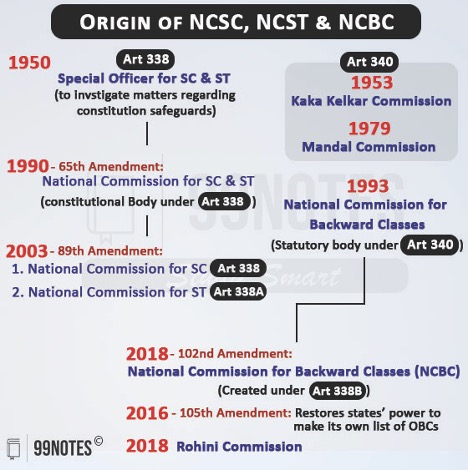
| 105th Constitutional Amendment Act, 2021 |
|
Composition of NCBC:
- The commission comprises a chairperson, vice-chairperson and three other members.
- At least two persons of the Vice-chairperson and all other members shall be appointed from amongst persons belonging to the socially and educationally backward classes.
- At least one other member shall be appointed from amongst
Appointment and Tenure of NCBC
Under Article 338-B, a new National Commission for Backward Classes was set up in 2018;
- Appointment: The President appoints the members of the commission.
- Condition of service and tenure: The constitution empowers the President of India to determine the condition of services and tenure of the members.
These conditions have been defined in the National Commission for Backward Classes chairperson, Vice-chairperson, and members (conditions of services and tenure) Rules, 2018 (Source).
Qualification of NCBC:
As per the NCBC rules, 2018, the members shall be persons of ability, integrity, and standing having a record of selfless service to the cause of justice for the Socially and educationally backward classes.
- The chairperson shall be an eminent sociopolitical worker belonging to the socially and educationally backward classes.
- Vice-Chairperson and all other members, out of whom at least 2 shall be appointed from amongst persons belonging to the Socially and educationally backward classes.
- At least 1 other member shall be appointed from amongst women.
Powers of the National Commission for Backward Classes:
Under Article 338B(4) of the constitution, the commission has the power to regulate its own procedure. The commission has the powers of a civil court while investigating any matters or inquiring into any complaint in particular with respect to the following matters:
- It can examine a person on
- It has the authority to summon and enforce the attendance of any person and examine on oath.
- It can discover and produce any documents and receive evidence on affidavits.
- Obtaining any public record from a court or office.
- It can issue summon for the examination of witnesses and documents
- Any other matter that the President may
Functions of the National Commission for Backward Classes:
Under Article 338B of the constitution, the following functions have been enumerated:
- Examines matters related to safeguarding: the commission examines and looks into all the matters related to the constitutional and legal safeguards for the socially and educationally backward classes(SEBC) and reviews their work.
- Scrutinise specific complaints: The Commission looks into the particular complaints related to the deprivation of rights and safeguards of the Scheduled castes (SCs).
- Evaluates progress: the commission reviews the progress of the Scheduled Caste development under the Union or a state and participates in and provides advice on the planning process for their development.
- Presents the Report: The commission may present the report annually or at other times as the constitution may specify to the President on working the safeguards.
- Recommends Union or States: recommends Union or to any state regarding the effective implementation of the safeguards and the welfare, protection, and socio-economic development of the backward classes.
- Consultation Functions: Both the Union and state governments needed to consult the commission on all significant policy matters that affected the socially and educationally backward classes.
- Other functions: It fulfils the functions related to the protection, development, welfare and advancement of the backward classes as deemed fit by the President or any law.
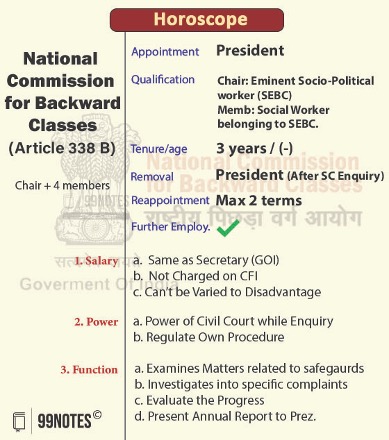
Report of the Commission:
- Presents the annual report: It is the commission’s responsibility to present a report to the President annually, and the commission may also submit a report whenever it deems fit.
- President places it in the Parliament: All of these reports are presented to the Parliament by the President, and a memorandum outlining the steps taken in response to the commission’s recommendation.
- It must include the rationale for the rejection of every one of these recommendations.
- The President forwards it to the governor: It is also the President’s responsibility to forward any report of the commission appropriated by the state government to the governor.
- The governor further laid down a memorandum before the state legislature explaining the action taken on the commission’s recommendations.
- The memorandum also includes the rationale for the rejection of these recommendations.
History of Commissions on Backward Classes:
Article 340 allows the President (i.e. the central government) to constitute a commission to investigate the condition of backward classes. Thus, if the government feels that there is a need to support backward classes through means like reservation, it can constitute a commission to investigate such needs. Under these provisions, the government has constituted a commission several times.
Kaka Kelkar Commission 1953 (1st Backward Classes Commission)
The commission was appointed to decide the criterion on the basis of which socially and educationally backward classes could be identified and to make suggestions that should be taken by the Union or any state government.
The following are the criteria formulated by the commission for the backward classes:
- Low socio-hierarchical position in the traditional Hindu society.
- Lack of general educational advancement among the significant sections of a caste.
- Inadequate representation in the field of commerce, trade and industry.
No action was taken on the report.
Socially and Educationally Backward Classes Commission (known as the Mandal Commission), 1979
Under Article 340 of the constitution, the President appointed a commission under the chairmanship of Bindeshwari Prasad Mandal in 1979, having two aims:
- To investigate the condition of educationally, socially, and backward classes and
- To suggest the criteria for defining such classes and measures that should be taken for the advancement of the socially and educationally backwards classes.
Thus, it was designed to examine the desirability for the reservation of appointments or posts in favour of such backward classes of people who are not adequately represented in public services.
The commission submitted its report in 1980, stating that:
- Almost 52% of the population belonged to other Backward classes.
- It proposed a 27% reservation for them in government jobs and educational institutions.
In 1990, the Mandal commission’s recommendations were implemented. In 1991, then Prime Minister P.V. Narasimha Rao’s government made a provision for 10% reservation for economically weaker sections, taking the total reservation in India to around 60%.
Indra Sawhney V/S Union of India, 1992
The above-mentioned reservation policy was challenged in the Supreme Court. The nine-judge constitutional bench gave a landmark Judgment:
- It struck down the provision of 10% reservation that was provided for economically weaker sections. It ruled that a backward class of people cannot be identified only on the basis of economic criteria. The Indian constitution defined social and educational backwardness only.
- The apex court upheld the validity of the 27% reservation for other backward-class commissions, and the concept of the creamy layer was introduced and it was excluded from the reservation.
- The Supreme Court held that “once backwards, always backwards is not acceptable, and in any case, the creamy layer has no place in the reservation system”.
- The Supreme Court capped reservations up to 50%, i.e., the total proportion of reservations (including SC, ST, and OBCs) had to be below 50% under articles 15(4) and 16(4) of the constitution.
How is the New National Commission for Backward Classes different from the previous one?
- Transparency: the constitution empowers the President to mention the socially and educationally backward classes (SEBC) in the central list after the consultation of the governor (Article 342A added through the 102nd Constitutional Amendment Act)
- Grievance redressal: the commission has been accorded the status of civil courts, which means they can take cognisance of the complaints and the people’s grievances and are empowered to initiate legal action to redress them.
- Constitutional Body: By passing the 102nd constitutional amendment, it became a constitutional body with the power to examine the inclusion or exclusion of castes within the list of socially and educationally backward classes and advise the government regarding this.
- Review and Progress monitors: the commission is authorised to review the progress of the Scheduled Caste development under the Union or a state and participate in and provide advice on the planning process for their development.
Concerns with the new National Commission for Backward Classes:
- Lacks Expert body: the National Commission for Backward Classes lacks an expert body possessing expert knowledge; the composition of the commission is all left to the President’s discretion.
- No fixed tenure: The term of the commission is not specified; instead, it depends on the will of the government of India, hampering its independent work.
- Only advisory in nature: The recommendation of the commission on the inclusion and the exclusion of the caste in the list are not binding on the government; the final decision rests with the president only.
- Breach of direction of Supreme Court: Not giving the role of deciding the inclusion and the exclusion, going against the decision of the Supreme Court in the Indra Sawhney.
- Deprived State Governments Power: The President notifies a list of the Socially and Educationally Backward Classes (SEBC) in relation to each state and UTs in consultation with the Governors (Article 342A); states could not make their own list.
Sub-Categorisation of the other backward class commission (Popularly known as Rohini Commission), 2017:
The four-member commission was headed by Justice G Rohini (former Chief Justice of Delhi High Court), who was appointed in October 2017 under the provisions of Article 340. Its mandate, according to its term of reference, was to:
- Address the anomalies in the reservation: the extent of inequitable distribution of the benefits of reservation among the castes or communities that are included in the central list. For instance, some OBCs have dominant representation in the reservation quota.
- To identify castes, communities or synonyms in the central list of OBCs and classify them into their sub-categories. It was tasked to find out the scientific approach for the sub-categorisation within such OBCs.
- To study the different entries in the central list of OBCs and recommend corrections if there is any repetition, ambiguities, inconsistencies and errors of spelling or transcription.
Its report was submitted in August 2023, and it suggested:
- To sub-categories 2600 castes under OBCs.
- Historically, crowded-out caste groups should be given a larger share of the 27% reservation.
- The dominant castes having access to most benefits must be given the smallest share.
However, several states have demanded separate and independentIndependence caste-based surveys in their independent Jurisdiction. Most notably, the Bihar Government has conducted its own survey.
Way Forward:
- Expert body: the commission should have an expert body with members possessing expert knowledge from diverse fields.
- Sub-categorisation: to spread the benefits of reservation and other social justice measures equitably among the various castes.
- Findings of the caste census and National Commission for Backward Classes recommendation should be published in the public domain.
- Recommendations of the commission should be made binding on the government.

